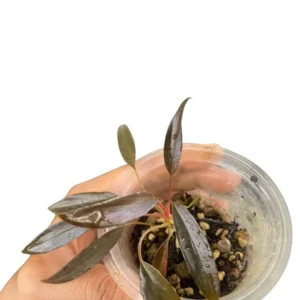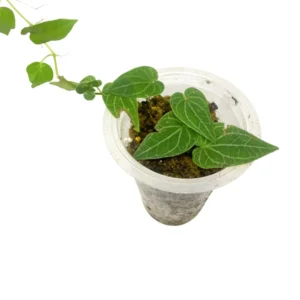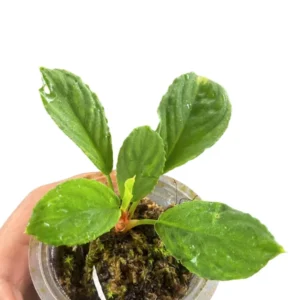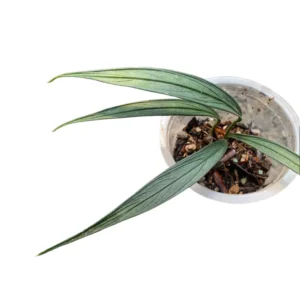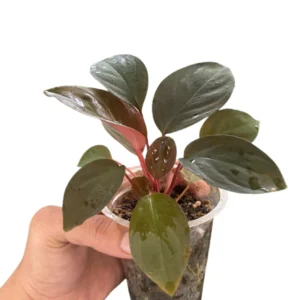Black Neon Tetra
Paracheirodon simulans
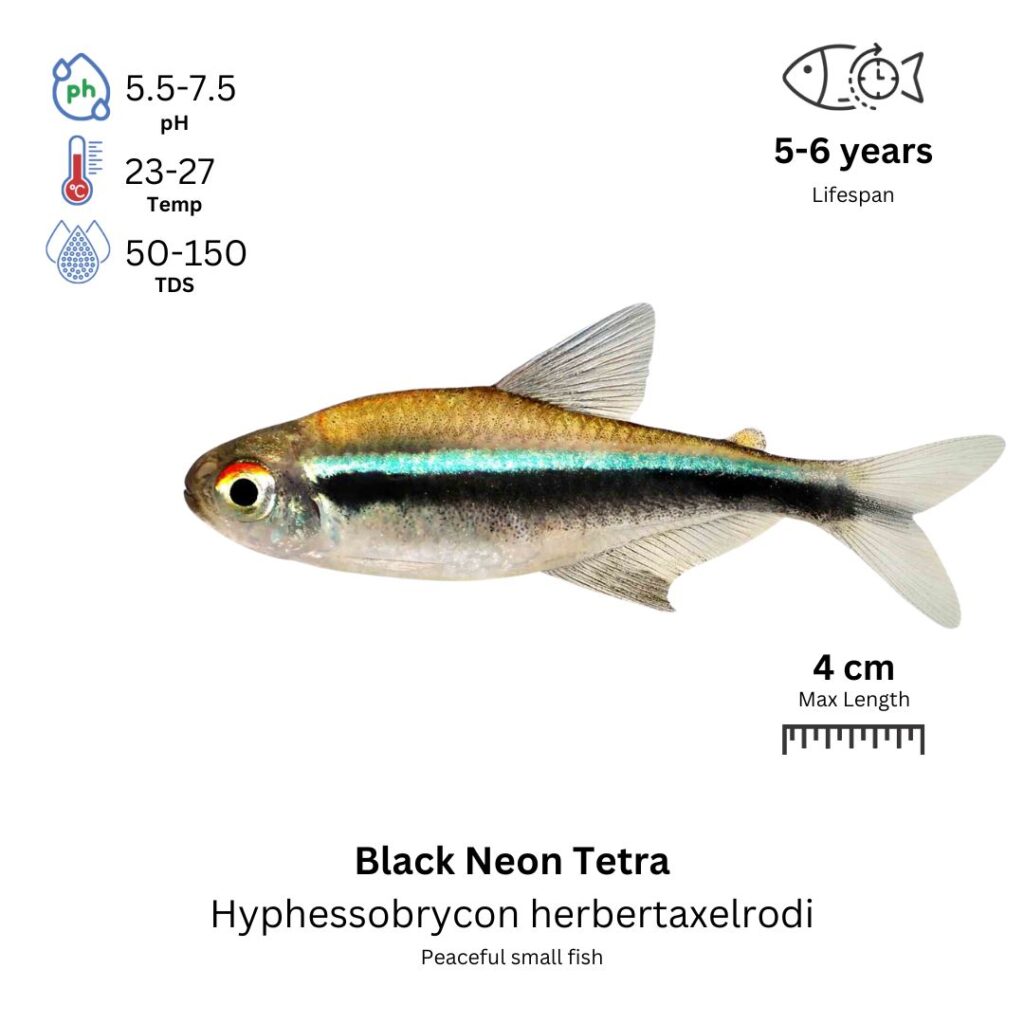
Description
The Black Neon Tetra is a small, peaceful fish known for its unique and striking appearance. These fish have a black body with a vivid neon blue horizontal stripe that runs from the head to the tail. The contrasting blue and black colors create an eye-catching effect, particularly when kept in groups. The neon blue glow is more noticeable in low-light conditions, giving them a soft, glowing appearance.
Habitat Origin
Native to the Amazon River Basin in South America, specifically found in countries like Brazil and Peru. Black Neon Tetras are commonly found in slow-moving waters with dense vegetation, where they can easily hide from predators and find food. They are adapted to slightly acidic, soft water conditions with low light, which is important to replicate in aquariums.
Aquarium
Ideal Number in Aquarium: Best kept in schools of 6 – 8 individuals to encourage natural schooling behavior and reduce stress.
Favorite Food

Black Neon Tetras are omnivores and will accept a variety of foods. They can be fed flake food, micro pellets, and live or frozen foods such as brine shrimp, daphnia, and bloodworms. They will also enjoy vegetable-based foods like spirulina, blanched spinach, and lettuce. A varied diet ensures they receive the necessary nutrients for good health and vibrant coloration.
Behavior:
Black Neon Tetras are peaceful and active, often seen swimming in schools. They enjoy the company of other fish and will engage in natural schooling behavior, especially when kept in groups of six or more. Their small size and peaceful nature make them an ideal choice for community tanks, where they will peacefully coexist with other non-aggressive species.
Special Care:
Black Neon Tetras are easy to care for but require stable water conditions. They are sensitive to poor water quality, so regular water changes (at least 20-30% weekly) and a good filtration system are important to maintain clean, healthy water. A gentle filtration system is ideal, as strong water currents can stress the fish.
Compatibility with Other Fish:
Black Neon Tetras are peaceful and do well in community aquariums with other small, non-aggressive fish. They are compatible with species like neon tetras, harlequin rasboras, small corydoras catfish, and other peaceful species. However, they should be kept with larger or more aggressive fish such as bettas, cichlids, or goldfish, as these may pose a threat to the tetras.
Breeding Tank Setup
It is highly recommended to use a separate breeding tank for Black Neon Tetras, as eggs are often eaten by adults or other tank mates in community setups. A 10-gallon tank (38 liters) is suitable for a small breeding group, while a 20-gallon tank (75 liters) is better for multiple pairs. Maintain pH between 5.5 and 7.0, temperature of 24–28°C (75–82°F), and hardness of 2–12 dGH. Use a sponge filter for gentle filtration and fry safety. Keep substrate minimal or fine-grained, and include soft-leaved plants like Java moss or Hornwort for egg attachment. Moderate lighting with a 12-hour cycle is ideal to simulate a natural environment.
Conditioning the Breeders
To condition the breeding group, offer a varied and high-quality diet. Feed them tropical flakes or micro pellets, live or frozen protein sources such as brine shrimp, daphnia, and bloodworms, and vegetable-based foods like spinach or peas. Regular 25–30% water changes are essential. To trigger spawning, a larger water change (around 50%) and a slight increase in temperature can simulate rainy season conditions that encourage reproduction.
Spawning Process
Spawning generally occurs in the early morning, particularly after a stimulating water change. Males will display intensified neon coloration and actively pursue the females, who will scatter their eggs across plants or other surfaces. A healthy female can lay 30–60 eggs per session. The eggs are adhesive and stick to leaves or substrate. It is critical to remove the adult fish immediately after spawning, as they tend to consume their own eggs if left in the tank.
Fry Development
Black Neon Tetra eggs hatch within 24–36 hours, influenced by water temperature. Once hatched, the fry remain still until they become free-swimming (about 3–4 days later). Initial feeding should consist of infusoria or liquid fry food. As the fry grow, you can begin feeding baby brine shrimp, microworms, or finely crushed flakes. Perform daily water changes (10–20%) to maintain water quality, and keep feeding light to avoid pollution that can harm the delicate fry.
Advanced Tips
Black Neon Tetras typically reach sexual maturity around 6 months, but optimal breeding results are achieved with fish about 1 year old. Males are smaller and more colorful, with vivid blue stripes, while females appear plumper, especially when gravid, and have subtler coloration. Avoid any sudden shifts in water conditions, and ensure the breeding tank remains peaceful and free of aggressive tank mates. Consistent care and water quality are essential for successful spawning and fry development.

